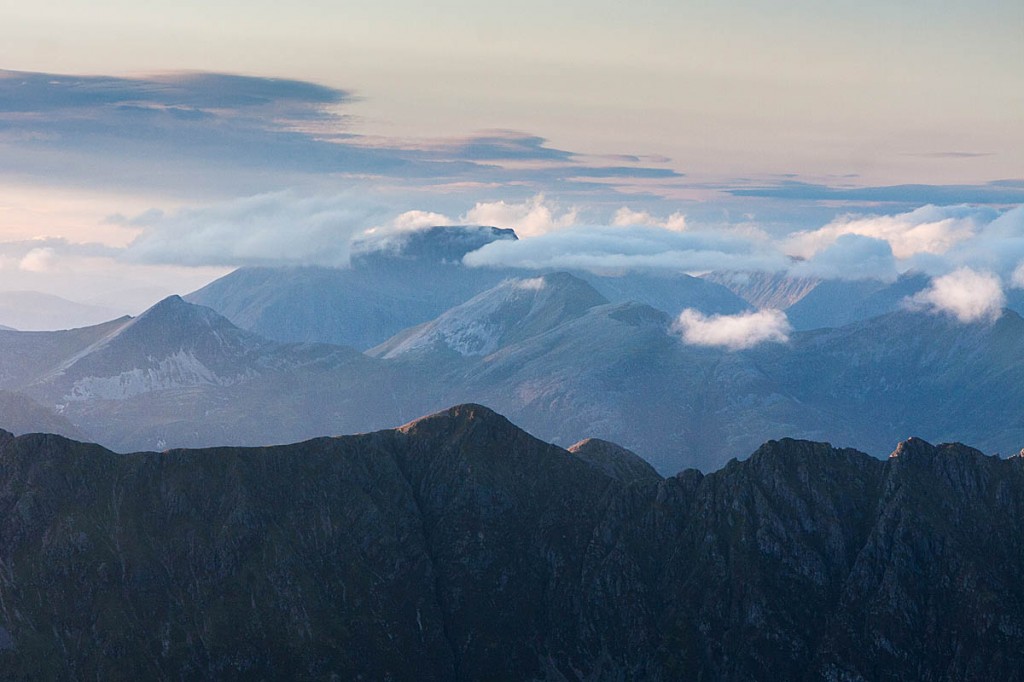Nine out of ten people surveyed in Scotland said large-scale industrial developments should be subject to restrictions in the nation’s most important landscapes.
A similar proportion expressed pride at Scotland’s scenic landscapes, yet most people were ignorant of one of the most important designations of these areas.
The National Trust for Scotland commissioned the survey, in which 1,229 people gave their views on the landscapes.
Ninety-five per cent of respondents said Scotland’s landscapes were one of the most important factors in attracting tourists.
The charity commissioned the online study of attitudes to mark the 40th anniversary of the setting up of national scenic areas. The establishment of these 40 designated areas followed their identification by the then Countryside Commission for Scotland in 1978. A total of 13 per cent of Scotland’s land area now falls into the NSAs, which are overseen by Scottish Natural Heritage.
The designation is roughly equivalent to areas of outstanding natural beauty in England and Wales. The NTS commissioned a study, Highland Landscape by WH Murray, in 1962, which laid the foundations for the establishment of the areas, with an underlying desire to protect the beauty of Scotland’s landscape and enable economic and amenity factors to be weighed evenly on the scales.
Yet only 49 per cent of survey respondents had heard of national scenic areas, compared to 98 per cent who were aware of national parks, of which Scotland has two.
Only 22 per cent of people thought large windfarms and electricity transmission developments should be allowed to have an impact on the national scenic areas, with more than eight out of 10 saying planning rules should be strengthened.
The trust said: “Location, social background, age and gender made virtually no difference to the opinions expressed through the survey.
“It was also clear that respondents were unaware of or confused by the many different designations intended to protect landscapes in Scotland. For example, 88 per cent were ‘definitely aware’ of national parks whereas the percentage for national scenic areas was only 20 per cent and 23 per cent for wild land areas.”
When asked whether ‘most new development in the countryside is having a positive impact on Scotland’s scenic landscapes,’ fewer than a quarter of respondents agreed, with 29 per cent neutral, and 33 per cent disagreeing. The NTS said this suggests there is opportunity, and a need, for better planning and design to ensure the sustainable development of our landscapes.
The National Trust for Scotland’s head of conservation and policy Stuart Brooks said: “While the social and economic situation and types of pressure have changed since 1978, it’s abundantly clear that one thing has been constant: the people of Scotland’s determination to see the landscapes they love properly protected.
“It’s been 40 years since national scenic areas were established, and up to this point they have been largely effective. Their amenity value has grown enormously within that time to the point where they are key economic drivers for Scotland. This is bringing wealth and opportunity to rural communities, whether as places to live or drawing visitors from around the world.
“Technological advances to produce and distribute clean energy to help combat climate change is necessary but presents new challenges to protecting our landscapes and this is a concern for people as demonstrated through this poll.”
Mr Brooks said the Planning Bill currently before parliament offered a chance to ensure national scenic areas and wild land areas are future-proofed to ensure they continue to protect the beauty of our landscape and support the economy and communities.
“Let’s also look beyond the Highlands and begin a discussion about the value of landscapes everywhere and the role their stewardship can play in the health and prosperity of our nation,” he added.
The director of the Association for the Protection of Rural Scotland John Mayhew said: “Scotland’s national scenic areas are the jewels in our nation’s crown.
“They represent the finest examples of the types of landscape for which Scotland is renowned around the world. When well managed, as they have been in Galloway, they can enhance the special qualities of the local landscape, support the local economy and inspire pride and passion amongst local people.
“They have played a key role over the years in resisting inappropriate development, such as the Harris superquarry.
“This new research is welcome, as it shows how much the people of Scotland value the beauty of their landscapes. It is also timely, as this year we celebrate 40 years since the Scotland’s Scenic Heritage report which led to the NSAs. But most of our NSAs would benefit from more funding, better publicity and more positive management.”
The responses to the survey, which was conducted by Mark Diffley Consultancy and Research, are available online.
